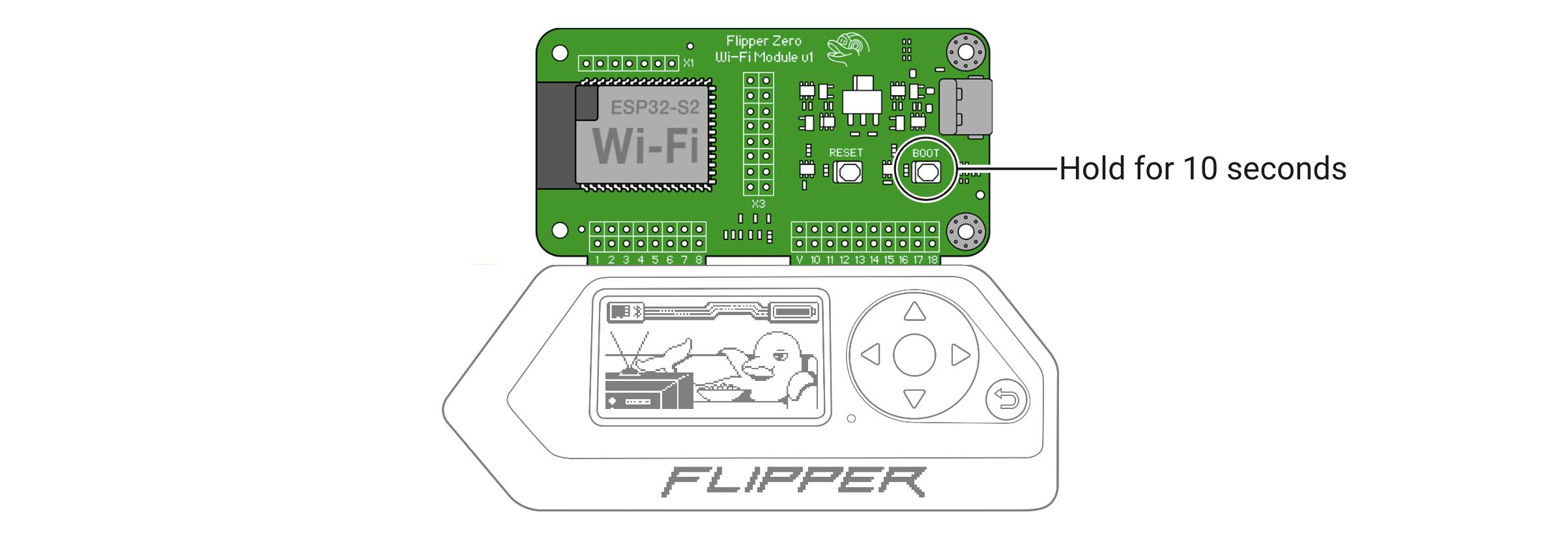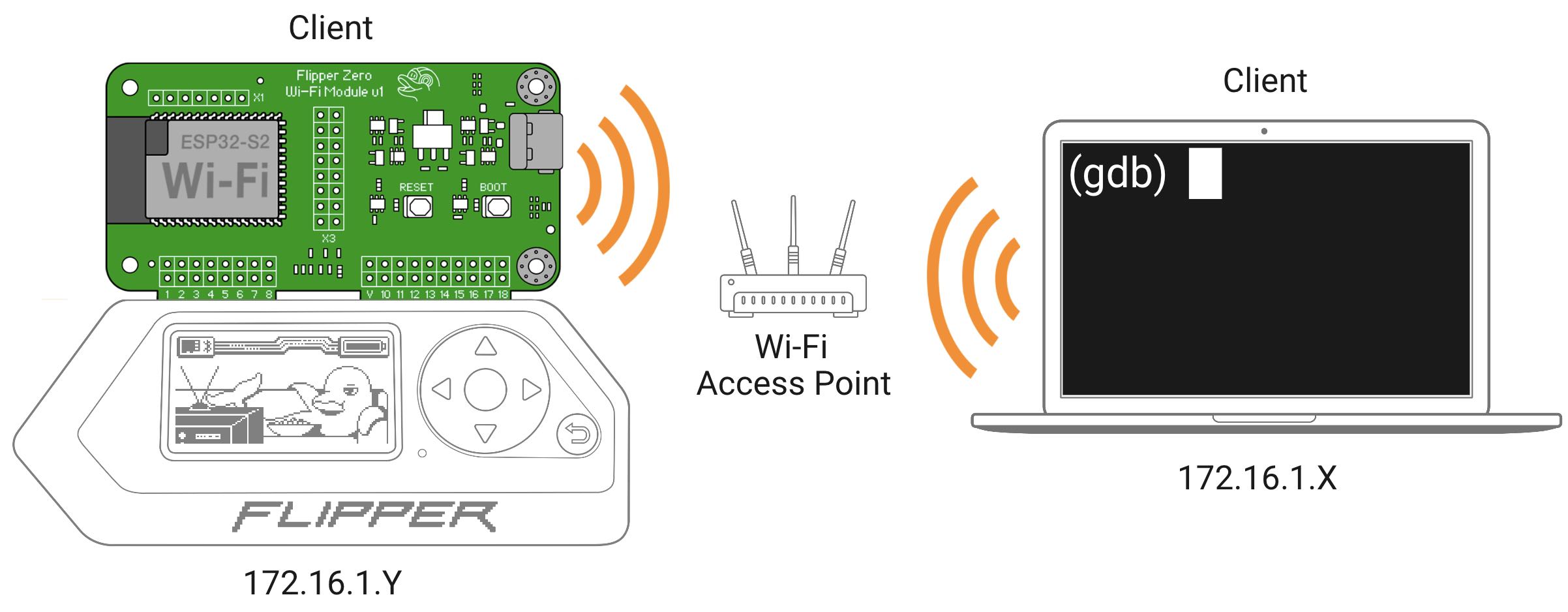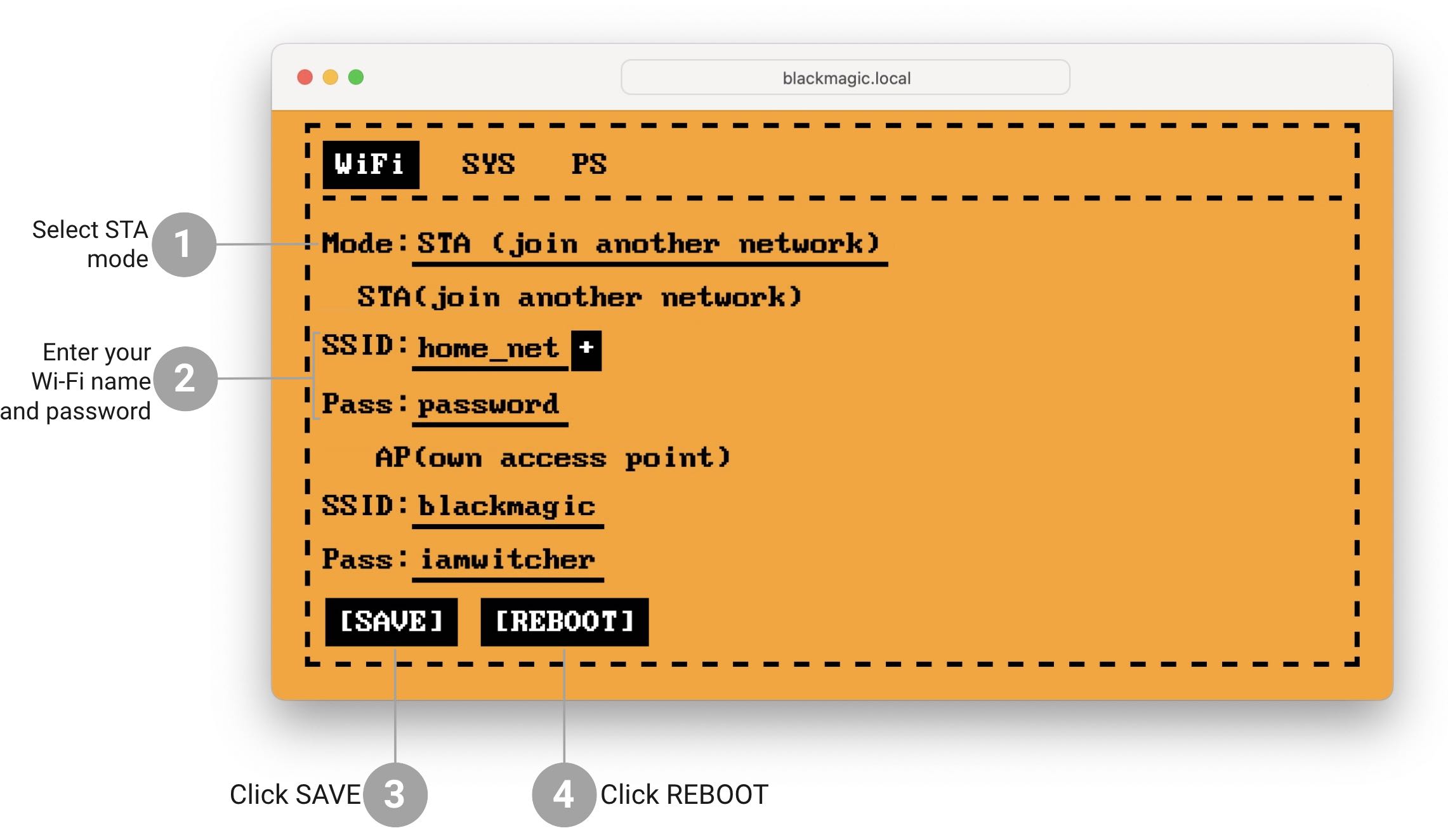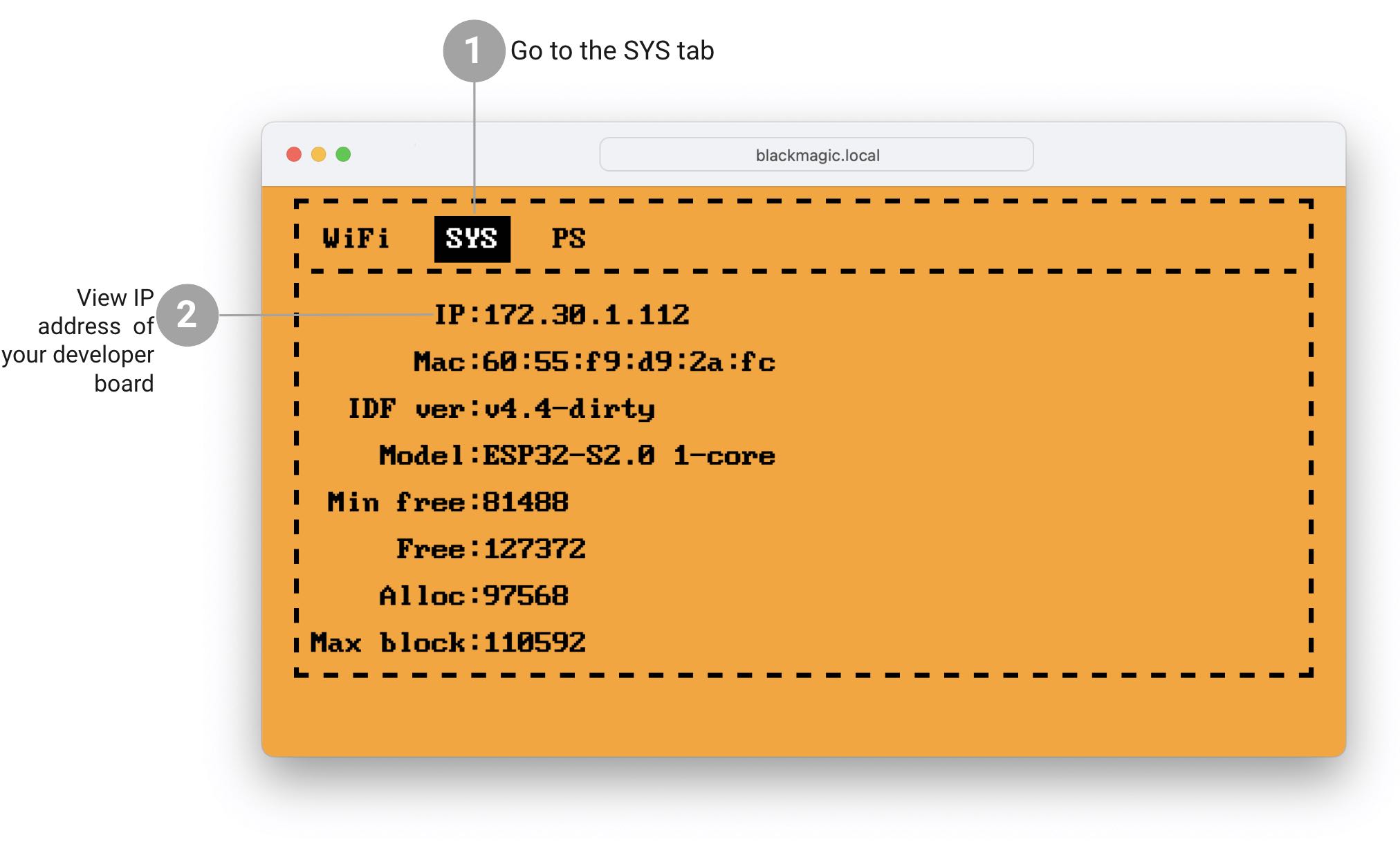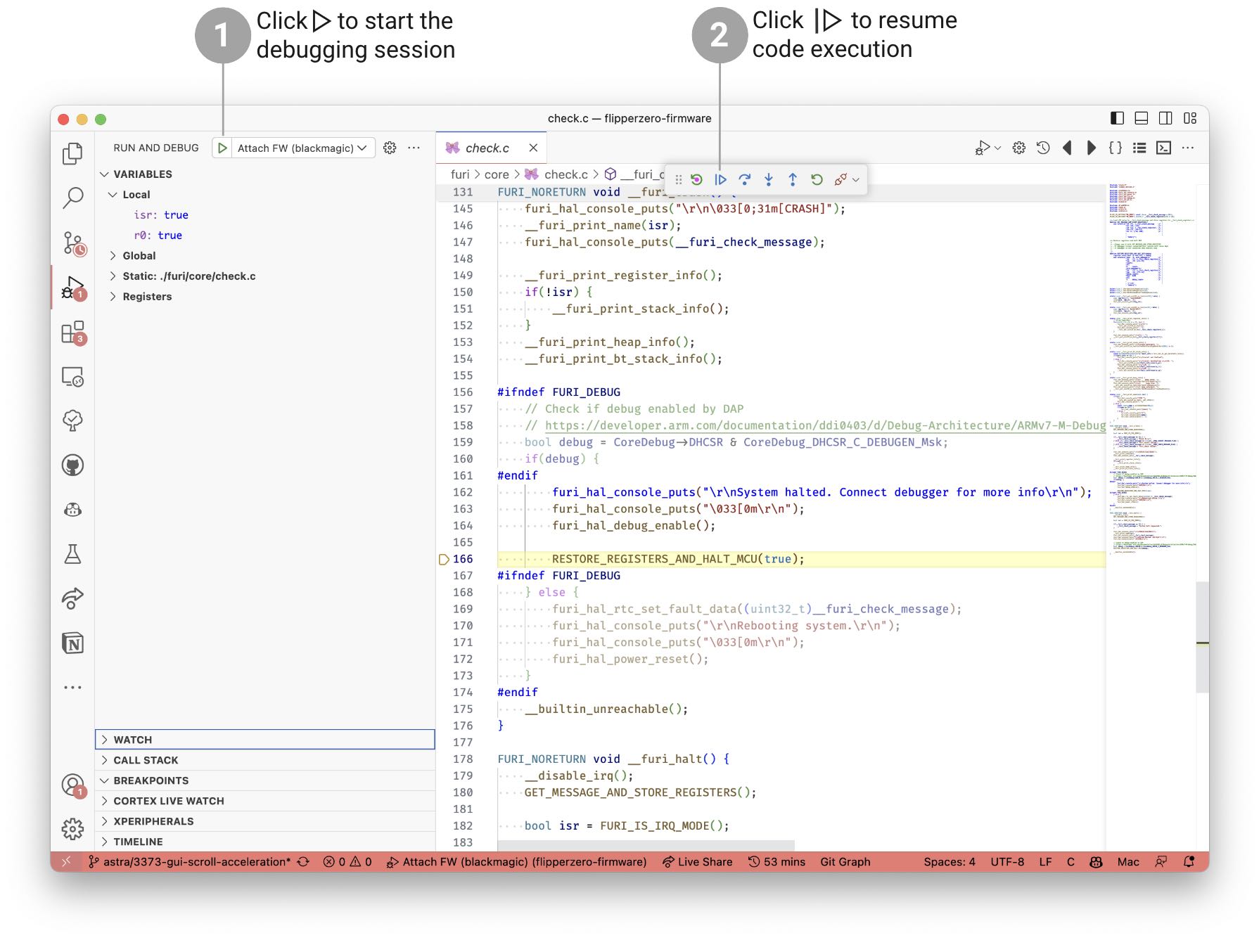This commit improves the documentation by converting raw URLs into descriptive text links in the FAQ and BadUSB documentation. This enhances readability and navigation for users looking for specific information. Additionally, minor formatting adjustments were made for better consistency and clarity.
8.1 KiB
Get started with the Dev Board
The Wi-Fi Developer Board serves as a tool to debug the Flipper Zero firmware. To debug the firmware, the initial step involves compiling the firmware from its source code. This process enables the debugging functionality within the firmware and generates all the necessary files required for debugging purposes.
Important
Building and debugging the Flipper Zero firmware is fully supported on MacOS and Linux. Support for Windows is in beta test.
Updating the firmware of your Developer Board
Update the firmware of your Developer Board before using it. For more information, visit Firmware update on Developer Board.
Installing Git
You'll need Git installed on your computer to clone the firmware repository. If you don't have Git, install it by doing the following:
MacOS
On MacOS, install the Xcode Command Line Tools package, which includes Git as one of the pre-installed command-line utilities, by running in the Terminal the following command:
xcode-select --install
Linux
On Linux, you can install Git using your package manager. For example, on Ubuntu, run in the Terminal the following command:
sudo apt install git
For other distributions, refer to your package manager documentation.
Building the firmware
First, clone the firmware repository:
git clone --recursive https://github.com/flipperdevices/flipperzero-firmware.git
cd flipperzero-firmware
Then, run the Flipper Build Tool (FBT) to build the firmware:
./fbt
Connecting the Developer Board
The Developer Board can work in the Wired mode and two Wireless modes: Wi-Fi access point (AP) mode and Wi-Fi client (STA) mode. The Wired mode is the simplest to set up, but requires a USB Type-C cable. The Wireless modes are more complex to set up, but they allow you to debug your Flipper Zero wirelessly.
Tip
Use the following credentials when connecting to the Developer Board in Wi-Fi access point mode: Name: blackmagic Password: iamwitcher
Wired
To connect the Developer Board in Wired mode, do the following:
-
Cold-plug the Developer Board by turning off your Flipper Zero and connecting the Developer Board, and then turning it back on.
-
On your computer, open the Terminal and run the following:
MacOS
ls /dev/cu.*Linux
ls /dev/tty*Note the list of devices.
-
Connect the Developer Board to your computer via a USB-C cable.
-
Rerun the command. Two new devices have to appear: this is the Developer Board.
Note
If the Developer Board doesn't appear in the list of devices, try using a different cable, USB port, or computer.
[!IMPORTANT] Flipper Zero logs can only be viewed when the Developer Board is connected via USB. The option to view logs over Wi-Fi will be added in future updates. For more information, visit Reading logs via the Dev Board.
Wireless
Wi-Fi access point (AP) mode
Out of the box, the Developer Board is configured to work as a Wi-Fi access point. This means it'll create its own Wi-Fi network to which you can connect. If your Developer Board doesn't create a Wi-Fi network, it is probably configured to work in Wi-Fi client mode. To reset your Developer Board back to Wi-Fi access point mode, press and hold the BOOT button for 10 seconds, then wait for the module to reboot.
To connect the Developer Board in Wi-Fi access point mode, do the following:
-
Cold-plug the Developer Board by turning off your Flipper Zero and connecting the Developer Board, and then turning it back on.
-
Open Wi-Fi settings on your client device (phone, laptop, or other).
-
Connect to the network:
- Name:
blackmagic - Password:
iamwitcher
- Name:
-
To configure the Developer Board, open a browser and go to
http://192.168.4.1.
Wi-Fi client (STA) mode
To connect the Developer Board in Wi-Fi client mode, you need to configure it to connect to your Wi-Fi network by doing the following:
-
Cold-plug the Developer Board by turning off your Flipper Zero and connecting the Developer Board, and then turning it back on.
-
Connect to the Developer Board in Wi-Fi access point mode.
-
In a browser, go to the configuration page on
http://192.168.4.1. -
Select the STA mode and enter your network's SSID (name) and password. For convenience, you can click the + button to see the list of nearby networks.
-
Save the configuration and reboot the Developer Board.
After rebooting, the Developer Board connects to your Wi-Fi network. You can connect to the device using the mDNS name blackmagic.local or the IP address it got from your router (you'll have to figure this out yourself, every router is different).
After connecting to your debugger via http://blackmagic.local, you can find its IP address in the SYS tab. You can also change the debugger's mode to AP or STA there.
Debugging the firmware
Open the Terminal in the flipperzero-firmware directory that you cloned earlier and run the following command:
./fbt flash
This will upload the firmware you've just built to your Flipper Zero via the Developer Board. After that, you can start debugging the firmware using the GDB debugger. We recommend using VSCode with the recommended extensions, and we have pre-made configurations for it.
To debug in VSCode, do the following:
-
In VSCode, open the
flipperzero-firmwaredirectory. -
You should see a notification about recommended extensions. Install them.
[!TIP] If there were no notifications, open the
Extensionstab, enter@recommendedin the search bar, and install the workspace recommendations. -
In the Terminal, run the
./fbt vscode_distcommand. This will generate the VSCode configuration files needed for debugging. -
In VSCode, open the Run and Debug tab and select Attach FW (blackmagic) from the dropdown menu.
-
If needed, flash your Flipper Zero with the
./fbt flashcommand, then click the Play button in the debug sidebar to start the debugging session. -
Note that starting a debug session halts the execution of the firmware, so you'll need to click the Continue button on the toolbar at the top of your VSCode window to continue execution.
To learn about debugging, visit the following pages:


